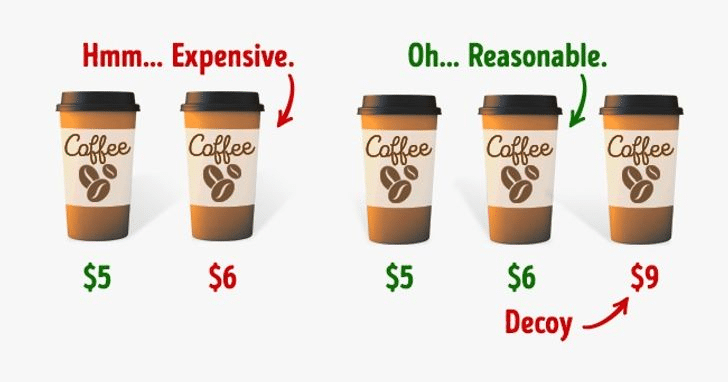In today’s highly competitive market, simply having a great product or service isn’t enough. Brand positioning is what sets a company apart, defines its identity, and ensures that consumers choose it over competitors. It’s the strategic process of creating a distinct perception of your brand in the minds of your audience. Whether it’s through experiential marketing, storytelling, or digital engagement, successful brand positioning helps businesses establish a lasting emotional connection with their customers.
In this article, we’ll break down what brand positioning is, why it’s crucial for business success, and how Towerhouse Global can help brands elevate their positioning through live event production, brand activations, and immersive marketing experiences.
1. What is Brand Positioning?
Brand positioning is the unique space a brand occupies in a consumer’s mind relative to its competitors. It defines how a company differentiates itself and the message it conveys to its target audience.
Key Elements of Brand Positioning:
✔Target Audience: Who are you trying to reach? Understanding customer needs and preferences is essential.
✔Unique Value Proposition (UVP): What makes your brand different and better?
✔Brand Personality & Voice: How does your brand communicate? Is it fun, professional, innovative, or luxurious?
✔Competitive Differentiation: How does your brand stand out in a crowded market?
✔Emotional Connection: What feelings or associations does your brand evoke?
For example, Nike’s brand positioning is not just about selling athletic shoes—it’s about inspiring performance and determination. Their Just Do It slogan reinforces a mindset rather than just a product.
How Towerhouse Global Can Help:
We specialize in bringing brand positioning to life through experiential marketing, creating real-world experiences that reinforce a brand’s identity, values, and emotional impact.
2. Why is Brand Positioning Important?
- Creates Strong Brand Recognition
Consumers are bombarded with countless brands daily. Clear positioning helps a brand stand out and become memorable.
Example: When you think of Coca-Cola, you associate it with happiness, togetherness, and classic taste. That’s not accidental—it’s the result of decades of consistent brand positioning.
- Builds Emotional Connection with Customers
A strong brand isn’t just about products; it’s about how it makes people feel. Companies with effective brand positioning create deep emotional bonds with their audience.
Example:Apple’s positioning isn’t just about selling iPhones—it’s about innovation, simplicity, and exclusivity. This emotional connection turns customers into brand advocates.
How Experiential Marketing Helps:
Brand experiences create real-life interactions that allow customers to feel, see, and engage with a brand in meaningful ways.
How Towerhouse Global Can Help:
We craft live activations, product launches, and immersive experiences that emotionally connect customers to brands, strengthening loyalty.
- Differentiates You From Competitors
A crowded market makes it difficult to stand out. Brand positioning gives you a competitive edge by defining what makes you unique.
Example:Tesla positioned itself as more than just a car company—it’s a movement toward a sustainable future. This positioning makes Tesla different from traditional automakers.
How Experiential Marketing Helps:
When brands host unique pop-up experiences, digital activations, or live brand engagements, they reinforce differentiation by showcasing their distinct personality.
How Towerhouse Global Can Help:
We specialize in brand activations that bring differentiation to life—whether it’s an interactive product demo, immersive pop-up, or an unforgettable launch event.
- Increases Customer Loyalty & Trust
Customers don’t just buy products; they buy into brands they trust. A well-positioned brand consistently delivers on its promise, building loyalty over time.
Example:Starbucks has positioned itself as a premium coffee brand with a strong community feel. Their store design, employee interactions, and branding reinforce this image.
How Experiential Marketing Helps:
Experiential marketing allows brands to engage directly with customers, build trust, and foster community.
How Towerhouse Global Can Help:
We create experiences that strengthen brand trust—whether it’s VIP brand events, influencer activations, or exclusive product reveals.
3. How to Develop an Effective Brand Positioning Strategy
Step 1: Identify Your Target Audience
A brand cannot appeal to everyone. Define your ideal customer profile and understand their:
- Needs
- Preferences
- Pain points
Example: Luxury brands like Gucci target high-end consumers who value exclusivity and craftsmanship.
Step 2: Define Your Unique Value Proposition (UVP)
Your UVP is what sets you apart from competitors. It should clearly communicate why consumers should choose you over others.
Example:Amazon’s UVP is convenience. Their positioning revolves around fast delivery, an extensive selection, and seamless shopping experiences.
Step 3: Create a Brand Experience that Reinforces Positioning
Brand positioning isn’t just about messaging—it’s about how consumers interact with your brand.
Example:Disney’s theme parks reinforce its brand positioning of “magic and wonder” by offering immersive experiences that transport visitors into fantasy worlds.
How Towerhouse Global Can Help:
We specialize in designing immersive brand activations and experiential campaigns that bring your positioning to life in ways customers will never forget.
Step 4: Align Your Marketing Strategy with Your Positioning
Everything from social media, advertising, content marketing, and live events should reflect your brand positioning.
Example:Patagonia’s marketing reinforces its eco-conscious positioning with:
✔Sustainability-driven messaging
✔Eco-friendly business practices
✔Experiential brand activations like outdoor adventure events
How Towerhouse Global Can Help:
We integrate digital and live experiences to ensure your brand positioning is consistent across all touchpoints.
Step 5: Measure & Optimize
Brand positioning is not a one-time effort. Track engagement metrics, customer feedback, and brand sentiment to refine your approach.
Example:Netflix constantly evolves its content strategy to match its brand positioning of “entertainment for everyone.”
4. How Towerhouse Global Helps Brands Strengthen Positioning
At Towerhouse Global, we understand that great brand positioning isn’t just about what you say—it’s about what customers experience. We help brands bring their positioning to life through:
✅Live Event Production – From product launches to VIP brand experiences, we create unforgettable moments.
✅Experiential Marketing Campaigns – Interactive activations that engage customers and reinforce brand identity.
✅Immersive Pop-Ups & Digital Activations – Bringing brands to life through augmented reality, virtual experiences, and hands-on brand interactions.
✅Influencer & Community Engagement – Strengthening brand perception through authentic partnerships and live events.
If you’re ready to take your brand positioning to the next level, Towerhouse Global is here to help.
📩Contact us today and let’s create a brand experience your audience will never forget! 🚀



